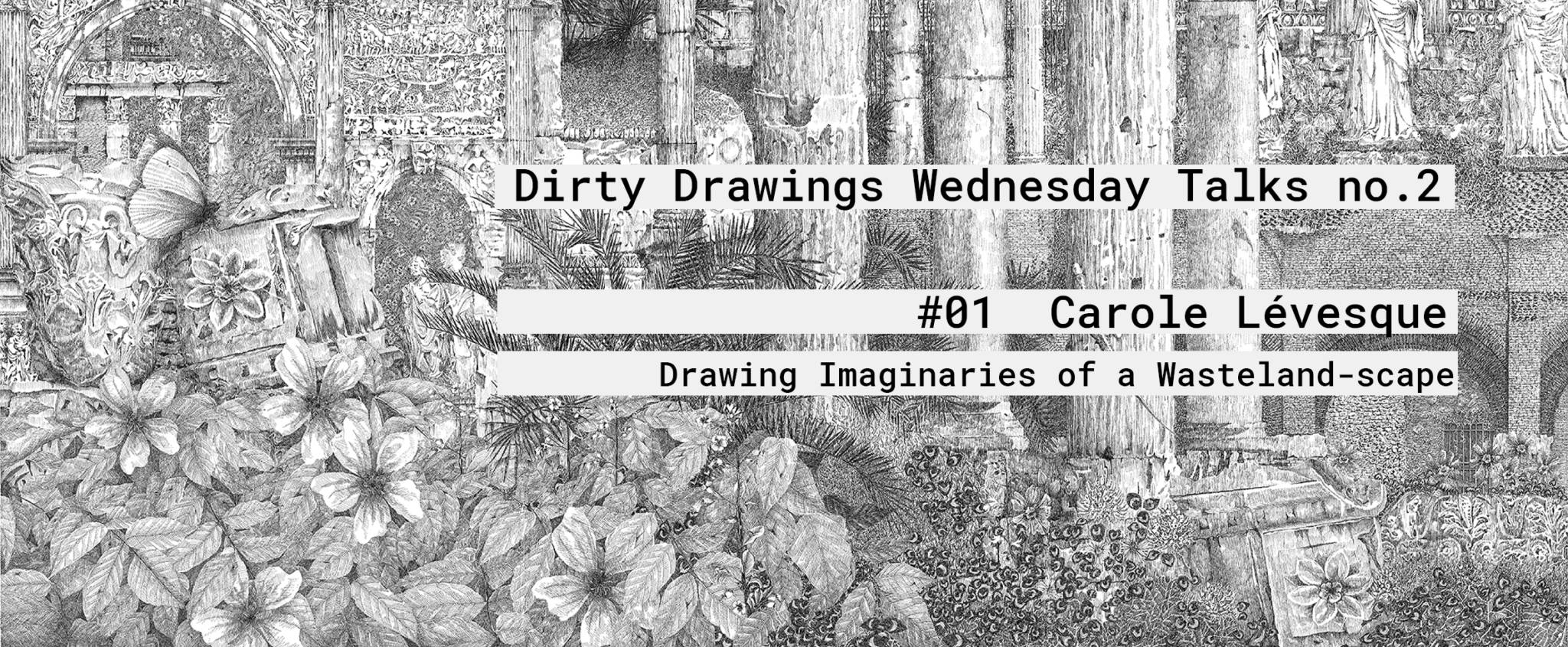
Dirty Drawings Wednesday Talks no.2 – #01 Carole Lévesque
Wed 14 December 2022
19:00
The Dirty Drawings Wednesday Talks have been organized by Bilge Bal and hosted by Istanbul Kent University since Spring 2022. The no.2 series of four inter/national lectures and two workshops will occur between December 2022 and March 2023.
The Dirty Drawings Wednesday Talks no.2 will focus on an earthly imagination: modern essays through the act of drawing to read the simultaneity of the (un)built and natural ones as companions, to sense the design investigations on/ more than the human Anthropocene, the ecology of a changing Earth, and to cast cross-disciplinary research tools and collaborations beyond divisions.
#01 Carole Lévesque (Co-founder of BéPI & Professor and Director of the School of Design,
UQAM)
“Drawing Imaginaries of a Wasteland-scape”
December 14, 2022, 19.00 (GMT+3, Istanbul)
via Zoom
Meeting ID: 813 4878 5757
Passcode: 771857
When landscape emerged as a pictorial genre in the 16th century, it was said to depict wastelands, uninhabited and uncultured sites, often integrating marvellous views of temples and rich architectural details. Because these landscapes departed from religious and mythical narrative, they endowed the natural world with its own purpose and, as such, represented a new understanding between nature, culture, and the built environment, seeking an ideal in spaces of abandonment. Rome embodied a key- figure to help build this ideal as an example to follow while defining what makes for a good city; a city where everyday life mingled with ruins reclaimed by nature. Sited on the limit between the inhabited city and the “disabitato”, the Foro Romano offered the first form of what we now call “terrain vague,” portraying the architype of an ideal urban landscape and a standpoint from which to reflect on the rise, fall and renewal of the city.
Drawn by hand with a technical pen, large-scale drawings attempt to seek the archetypes of terrains vagues. The Foro Romano, the Acqua Claudia and the Monte dei Cocci are flattened into two- dimensional compositions in which monuments, flora and fauna take on various scales, producing a view unreconcilable with Rome’s current situation. The drawings engage a play on perception and suggest that a lateral movement of the viewer could reveal other possible points of view and hidden landscapes. As such, they become repertoires for composing and reconstructing the ideal figures of the wasteland-scape.

General Info